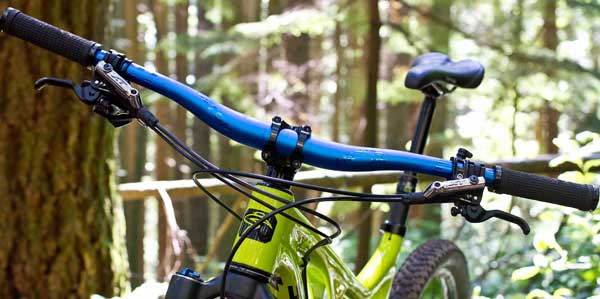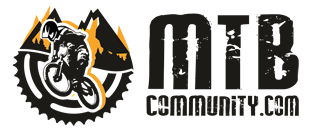- You are here:
-
MTBC Home

-
Mountain Biking Blog

-
General

- Choosing a Handlebar Width
Choosing a Handlebar Width

One important consideration when getting a new bike or setting up your existing bike is handlebar width. There are so many sizes out there ranging from 550 mm to 800 mm and many people like to buy wide handlebars and cut them down to the exact length they need. The width of your handlebars will affect how your bike rides and how easy it is to control in certain situations. Handlebars that are narrower are commonly seen on XC bikes (and older bikes) and wider bars are almost always used for downhill bikes. Narrow bars allow you to turn with less movement of the bars while wider bars offer more leverage with less force but you have to turn them further to get the same amount of turning as a narrower bar would give you. Wider bars also tend to be more stable while narrow bars allow you to maneuver easier through tight spaces like trees.
With wider bars usually come with the need for a shorter stem whereas narrow bars allow you to run a longer stem. A shorter stem lets you center yourself more over your bike which is better for going down steep trails while a longer stem allows you to "stretch out" more for those longer rides. You may end up having to try a couple of different stems to get the length that works best for you. One thing you can do is go to a bike shop and sit on some similar bikes with different width bars and different length stems to get an idea of what feels right.

Wider handlebars can allow you more control when doing technical climbs and definitely give you more control when doing fast downhill runs but when you get on the wider side you need to make sure you don't hit your bars on things like trees and rock walls otherwise you will be heading for a fall. The trend these days are for wider handlebars since mountain biking seems to be getting more aggressive and the bikes they make today can handle much harsher terrain thanks to improved geometry, design and suspension. Many people will find that handlebars that measure around 750 mm will be a nice starting point but if you do more aggressive riding such as enduro riding or racing then 780 mm will be a better choice. 780 mm also works well for downhill riding and many people will even choose to go with 800 mm for maximum stability and control.
Another thing to consider is the angle and rise of the handlebars. Some bars are straight across while others will be angled back or have a rise to them so be sure to know what you are looking for before making your purchase. The right combination of handlebar and stem will make all the difference in the world when out on the trail. Then there are things to consider like aluminum vs. carbon and 31.8 vs. 35 mm handlebar width but that's a story for a different day!
Posted by Jim Bernstein
Categories: General

